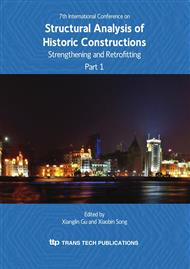p.259
p.265
p.271
p.275
p.283
p.289
p.295
p.301
p.307
Analysing Buildings from Context to Detail in Time: The ABCD Research Method Case Study: Friesland Provincial Library in Leeuwarden
Abstract:
Progress does not amount to destroying the future, but to preserving its essence, to generate the impetus to do it better today (Y. Ortega Y Gasset 1951). Working in the areas of history and construction technology, the spirit of these statement guided my research: developing a research method for buildings not listed (yet) as monuments but needed to be analysed before the next approach. When studying buildings it is essential to consider not only the art history, social and urban planning factors, but especially the construction engineering aspects. In this way, a deeper understanding of the underlying design and building methods used in our built environment can be developed. There have been many historical and architectural studies of buildings. The period since the Second World War has received particular interest. Unfortunately, most of these studies do not address the technical aspects of the construction of these buildings. However, these issues were covered by publications at the time these buildings were constructed. Technology provided me with the inspiration to develop a more comprehensive research method to assess buildings: Analysing Buildings from Context to Detail in time: ABCD research method. Technology, at academic level, should be considered in the analysis of a building. Here we are concerned with construction engineering, the study of the requirements associated with constructing buildings. The Analysing Building Construction in time research matrix (ABC matrix) can be used in practice. It incorporates the study outcomes which relate to the building itself. Contextual aspects as well as building aspects are included. They can be analysed at the three time levels to draw conclusions which are relevant to the future existence of the building. The case study of the Friesland Provincial Library in Leeuwarden will be worked out in the conference paper.
Info:
Periodical:
Pages:
283-288
Citation:
Online since:
October 2010
Authors:
Keywords:
Price:
Сopyright:
© 2010 Trans Tech Publications Ltd. All Rights Reserved
Share:
Citation:



